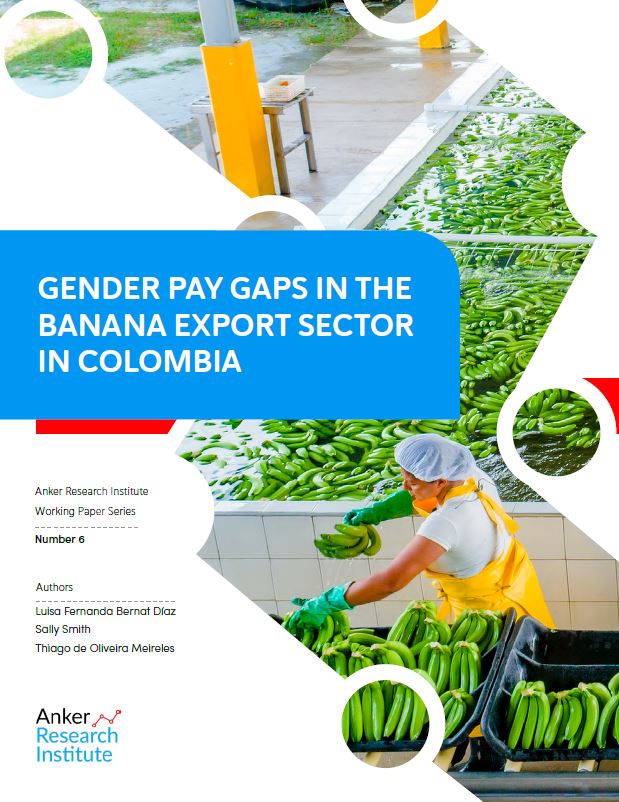Today marks the publication of the Anker Research Institute’s Gender Pay Gap study in the Colombian banana sector, the first of five to pilot the Institute’s methodology for measuring gender pay gaps at the workplace level. The development of this methodology and release of the first study are important steps forward for the living wage community and for everyone interested in gender equity, as gender pay gaps can be a significant barrier to achieving a living wage.

Around the world, women earn around 20% less than men earn, on average. While gender differences in education, skills, occupations, and working time explain some of this gender pay gap, a large part is due to discrimination. This is not only a violation of women’s human rights; it negatively affects a nation’s prospects for economic growth and social development. Women are disproportionately likely to be in low-paid work, which also has implications for efforts to guarantee a living wage.
The size of the gender pay gap, and its cause, varies from one workplace to the next. However, most analysis of gender pay gaps occurs at the country level or for broad categories, such as ‘agriculture’ and ‘manufacturing’. There is little information available on the size and causes of gender pay gaps in specific workplaces and sectors, including those linked to global brands and retailers. This makes it difficult, especially for employers, to design appropriate measures to close the gaps – if indeed a gap exists.
The Anker Research Institute’s new methodology addresses this by allowing in-depth analysis of gender pay gaps at the workplace and sector level. We use detailed payroll data to determine the size and direct causes of the gap and explore the root causes through interviews with workers, managers, and other stakeholders. We also assess the gender gap to a living wage, the results of which are sometimes quite surprising!
Our study in Colombia’s banana sector, supported by FAO, Fairtrade International, and Fairtrade Germany, assessed gender pay gaps at two banana companies in different regions of Colombia. Depending on the company, the types of pay considered, and the type and occupations of workers, the gender pay gap ranges between 8% and 20%. Importantly, we found that higher wages do not necessarily translate into smaller gender pay gaps. The implication is that if efforts to ensure workers earn a living wage are not gender-aware, they could inadvertently exacerbate gender inequality.
In the report, we highlight steps being taken by industry and trade unions in the Colombian banana sector to improve the gender balance and recommend further actions to close gender pay gaps. This includes training women in field activities, tackling gender stereotypes, promoting active participation in worker organizations, and clarifying the requirements of certification standards.
In the coming months, we will report on our Gender Pay Gap studies in other countries and continue to look for ways to scale up the measurement of gender pay gaps in global supply chains.
You can find the full study, “Gender Pay Gaps in the Colombian Banana Export Sector” (in English and Spanish), linked below and a recording of the study for the World Banana Forum here.
For more information, contact Sally Smith, Anker Research Institute Gender Lead, at inquiries@ankerinstitute.org
Read the report in English: Gender Pay Gaps in the Colombian Banana Export Sector
Read the report in Spanish: Brechas Salariales de Género en el Sector Bananero Exportador de Colombia





